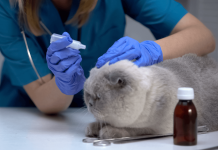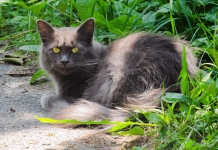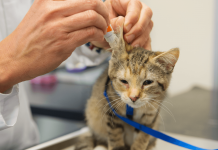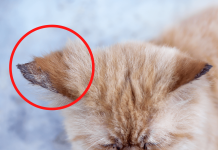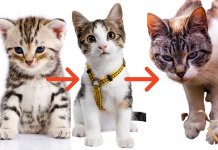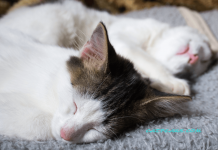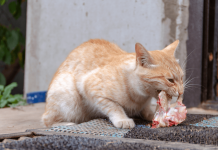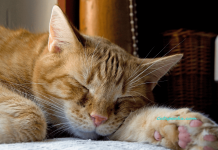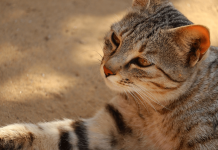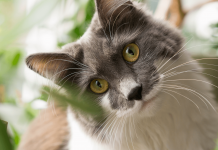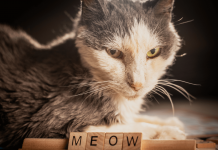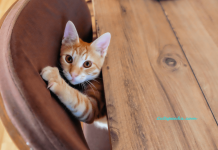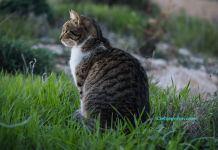If you are a cat parent, you must have heard about the FIP in cats. If you haven’t, then it is time to learn more about this fatal disease. After hearing the term, the first question that may come to your mind is,”What is FIP in cats?”
Well, the FIP is a viral disease for the cats. The condition can be fatal, and the cat may suffer much from this disease. No matter if you are a beginner, or own a cat for a long time, this article on cat’s FIP will help you a lot.
What is FIP in Cats?
Feline infectious peritonitis is the full form of the term FIP. Certain strains of feline coronavirus cause this viral disease in cats. Experts claim that most of the strain of the feline coronavirus is found in the gastronomical tract of the cat. The good thing is these viruses do not cause any significant disease.
Scientists sometimes refer to this condition as FeCV or feline enteric coronavirus. At the first stage, the infected cats do not show symptoms of this disease. But after some time, the feline will suffer from diarrhoea.
A statistic indicates that almost 25% of cats are already infected with the FIP or at the risk of getting it. The chances increase to 80% if you have multiple cats in the same house. However, in large colonies, the chances of getting infected are 100%.
Is FIP Contagious?
The FIP virus is not highly contagious. But the disease can be transmitted from one cat to another. How?
If the infected cat comes in close contact with another healthy cat, the disease will be transmitted. The virus also transmits through body fluid and faeces of the sick cat. However, if the mother cat is infected with FIP, and she feeds her kitten, the baby will also get the disease.
Symptoms of FIP in Cats:

FIP can be manifested as two forms. One is the dry form, and another one is the wet form. Both types include fever, weight loss, anxiety, and lethargy. The cat’s immune system gets very weak, and so, the pet does not respond to any antibiotic.
Effusive or wet FIP symptoms:
- The virus damages the blood vessels. As a result, fluid discharges from them. This leads to fluid buildup and inflammation in cavities.
- You may observe the peritonitis condition in the cat. It means fluid has stored up in the abdomen and it is causing a plot bellied appearance in the feline.
- Masses or lumps will form in the abdomen. Some confuse them with the tumours. But these are abscesses in the gut.
- The cat may have liver failure and jaundice.
- The fluid will be stored up in the chest. It will make breathing difficult for the cat. I have seen many infected cats suffocate because of this.
- In most cases, the cats die at an early age.
Non-effusive or dry FIP:
- The dry FIP happens when the immune system of the cat tries slowing down the replication of the virus but does not succeed completely. The infected cats feel chronic inflammation in the body vessels or the organs.
- In more than 30% cases, the cats suffer from inflammation of their eyes. This can cause a change in the shape and colour of the cats’ eyes and Irish. This condition can even lead to fluid discharge or eye bleeding. The pets suffer from severe eye pain and become sensitive to the bright light.
- The infected cat can suffer from brain inflammation, and it is bad. This leads to wobbling, seizure, or paralysis.
- The cat will have organ failure or inflammation.
- The FIP infected cat will eventually die a slow and painful death.
Diagnosing Process of FIP in Cats:

What is FIP in cats? You probably know the answer. Let’s talk about the diagnosis now.
The diagnosis of FIP is a bit difficult. It includes a lot of tests and sometimes major surgeries. I will try to explain everything in simple words.
- First of all, you need to do a corona test for the cat. This test will detect if there is any coronavirus in the cat’s body.
- In the recent time, a new PCR or polymerase chain reaction test has been introduced. This test can detect the virus more efficiently.
- The vets can suggest examining the serum protein level, and the white blood cell count.
- Chest fluid analysis is also important for the FIP diagnosis.
- Organ biopsy, fine needle aspiration of liver and kidney, radiography of chest are also necessary.
- The vet will also suggest blood tests for the infected cats.
Stages of FIP in Cats:
However, there are basically 3 stages of FIP. If the cat is severely ill, there will be only 2 stages.
The first stage: This is the initial stage. It takes two to four week for the virus to spread.
The second stage: This is the stage of dormancy. The virus will be inactive with the cat and cause no disease. Virus shedding will occur only if the cat is stressed, but the cat is not contagious. Some cats can transmit the virus to the surrounding cats. This stage will last for a month to years.
The final stage in FIP cats: This is the clinical illness stage. The cat is not contagious at this stage. It will last for a few weeks, and soon the cat will die.
Treatment of FIP in Cats:
The FIV disease is fatal, and in 95% of cases, the cat can not survive the condition. If the cat is suffering from a mild dry FIP, medicines or care can prolong the lifespan. But when it comes to the wet FIP, there is almost no hope.
If you find any FIP symptoms in your cat, take it to the vet. The professional will examine the cat to be sure. Even though the disease is not curable, anti-inflammatory drugs can help the cats suffer less.
Some experts believe the FIP vaccine can help to stop the transmission. But the vaccine is controversial, and many vets recommend not to use it.
What is FIP in cats? I hope the concept is clear to you. Keep an open eye to observe any type of changes in your feline. And make sure the cat gets a regular vet checkup.
Related: What is FIV in Cats? Symptoms, Treatment And Prevention


